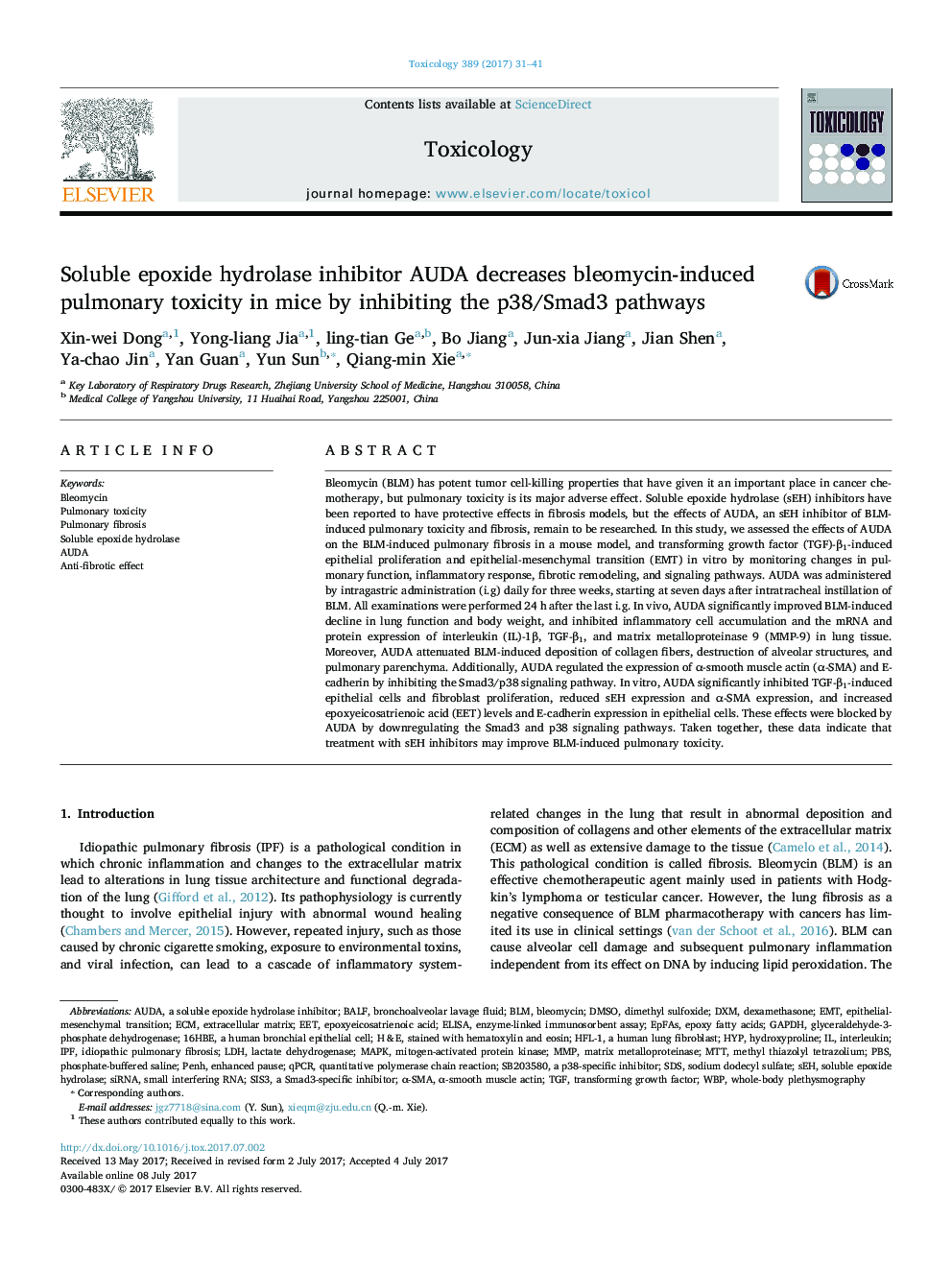| Article ID | Journal | Published Year | Pages | File Type |
|---|---|---|---|---|
| 5561722 | Toxicology | 2017 | 11 Pages |
â¢Bleomycin induces pulmonary fibrosis in mice.â¢AUDA inhibits sEH expression and increases EETs level in cells.â¢AUDA reduces cytokines and inflammatory cell infiltration.â¢AUDA inhibites lung fibrotic markers and improves pulmonary function.â¢AUDA inhibites lung fibrotic markers and improves pulmonary function.â¢AUDA improves pulmonary fibrosis through the p38/Smad3 pathways.
Bleomycin (BLM) has potent tumor cell-killing properties that have given it an important place in cancer chemotherapy, but pulmonary toxicity is its major adverse effect. Soluble epoxide hydrolase (sEH) inhibitors have been reported to have protective effects in fibrosis models, but the effects of AUDA, an sEH inhibitor of BLM-induced pulmonary toxicity and fibrosis, remain to be researched. In this study, we assessed the effects of AUDA on the BLM-induced pulmonary fibrosis in a mouse model, and transforming growth factor (TGF)-β1-induced epithelial proliferation and epithelial-mesenchymal transition (EMT) in vitro by monitoring changes in pulmonary function, inflammatory response, fibrotic remodeling, and signaling pathways. AUDA was administered by intragastric administration (i.g) daily for three weeks, starting at seven days after intratracheal instillation of BLM. All examinations were performed 24 h after the last i.g. In vivo, AUDA significantly improved BLM-induced decline in lung function and body weight, and inhibited inflammatory cell accumulation and the mRNA and protein expression of interleukin (IL)-1β, TGF-β1, and matrix metalloproteinase 9 (MMP-9) in lung tissue. Moreover, AUDA attenuated BLM-induced deposition of collagen fibers, destruction of alveolar structures, and pulmonary parenchyma. Additionally, AUDA regulated the expression of α-smooth muscle actin (α-SMA) and E-cadherin by inhibiting the Smad3/p38 signaling pathway. In vitro, AUDA significantly inhibited TGF-β1-induced epithelial cells and fibroblast proliferation, reduced sEH expression and α-SMA expression, and increased epoxyeicosatrienoic acid (EET) levels and E-cadherin expression in epithelial cells. These effects were blocked by AUDA by downregulating the Smad3 and p38 signaling pathways. Taken together, these data indicate that treatment with sEH inhibitors may improve BLM-induced pulmonary toxicity.
